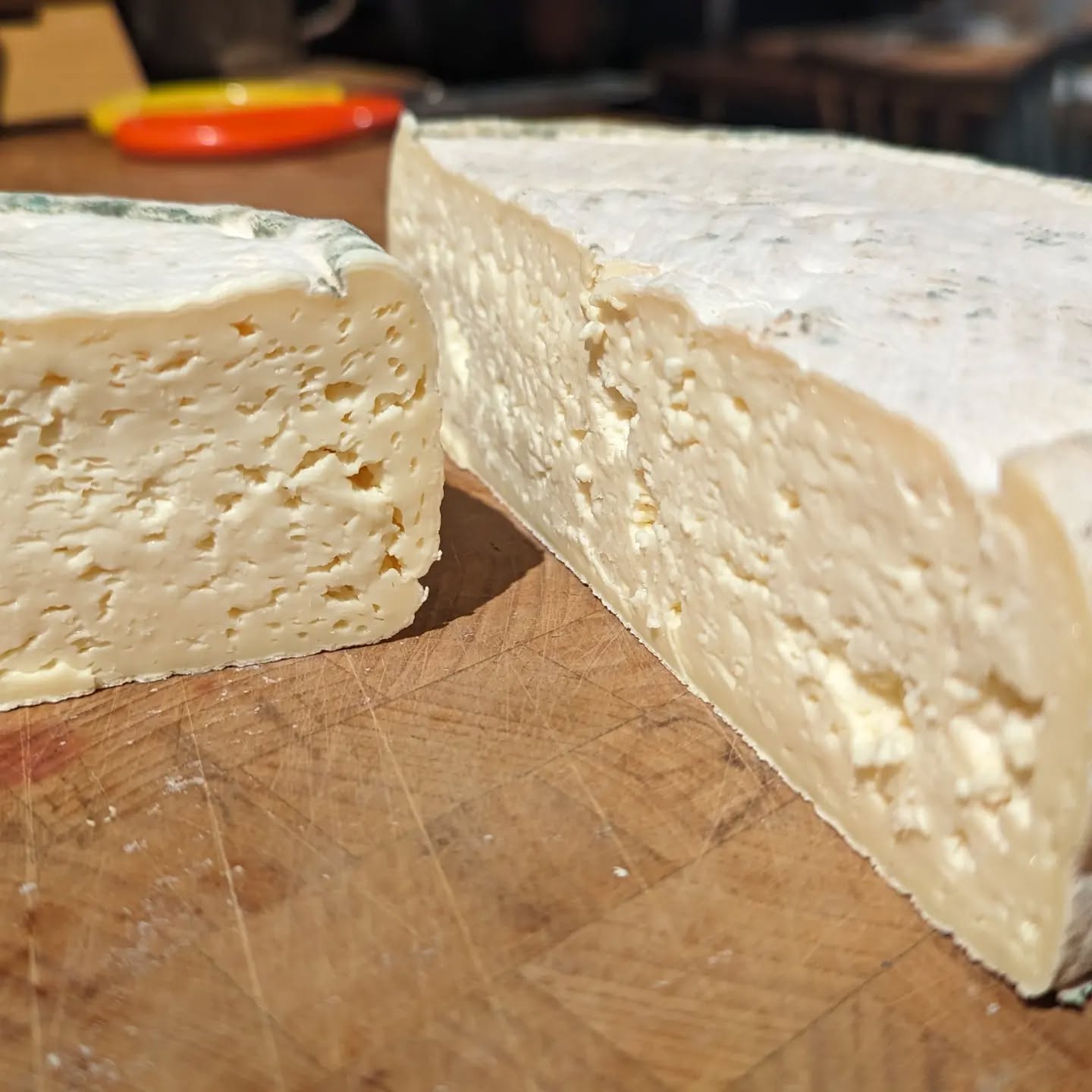· James Torr · Personal · 1 min read

This is the follow up to the Caerphilly cheese.
This is the follow up to the Caerphilly cheese. Looks and tastes pretty delicious: rich, a little funky, creamy. Super happy with it!
· James Torr · Personal · 1 min read

This is the follow up to the Caerphilly cheese. Looks and tastes pretty delicious: rich, a little funky, creamy. Super happy with it!
Cheese unveil. This is a washed-rind aged ricotta, which isn't really a thing, just something I made. Ricotta isn't usually aged due to the fact that most of the bugs and enzymes are killed due to it being nearly boiled. However, I wanted to try it, and added some back in after the curds had cooled down. I also ended up washing with some brined whey, basically brushing some on during the early ageing process.
My recent foray into cheesemaking. From top left in the cover photo: Bel Paese, Caerphilly, Marcellin. There's a nice book called The Art of Natural Cheesemaking that I started with. His approach is very much avoiding the sterile modern approach, also found in modern beer making, and using diverse microbial cultures found in raw milk and kefir to produce interesting and characterful cheese. I used my "house" amasi culture which I've had for 18 months or so now, a South African lacto ferment that has seemed to have survived better than any other I've used.
Picked up some discount milk during the holiday insanity and have been at it for a few days, reading and learning about cheese. On the left here are quite a few mozz balls, which I've frozen for pizza. On the right is an Italian Ligurian cheese called bel paese. The curds are pretty firm and they're not pressed. This will age in the fridge for 3-4 weeks.
Fermented butter. Forgot to take pics of the process, so sorry about that, this is the final result! Super simple, and about the same price as normal butter, and takes a few minutes if you're using a stand mixer. 1. Grab some high fat cream.